
Filter News
Area of Research
- Advanced Manufacturing (12)
- Biology and Environment (6)
- Building Technologies (1)
- Energy Science (39)
- Fusion and Fission (2)
- Fusion Energy (7)
- Isotopes (11)
- Materials (18)
- Materials for Computing (4)
- National Security (5)
- Neutron Science (2)
- Nuclear Science and Technology (8)
- Nuclear Systems Modeling, Simulation and Validation (1)
- Quantum information Science (1)
- Supercomputing (4)
News Type
News Topics
- (-) 3-D Printing/Advanced Manufacturing (47)
- (-) Advanced Reactors (15)
- (-) Cybersecurity (9)
- (-) Frontier (4)
- (-) Isotopes (18)
- (-) Microscopy (22)
- (-) Space Exploration (10)
- Artificial Intelligence (25)
- Big Data (29)
- Bioenergy (40)
- Biology (48)
- Biomedical (24)
- Biotechnology (11)
- Buildings (31)
- Chemical Sciences (22)
- Clean Water (21)
- Composites (14)
- Computer Science (56)
- Coronavirus (17)
- Critical Materials (14)
- Emergency (1)
- Energy Storage (45)
- Environment (88)
- Exascale Computing (4)
- Fossil Energy (1)
- Fusion (18)
- Grid (29)
- High-Performance Computing (23)
- Hydropower (8)
- Irradiation (2)
- ITER (4)
- Machine Learning (24)
- Materials (45)
- Materials Science (49)
- Mathematics (8)
- Mercury (7)
- Molten Salt (5)
- Nanotechnology (18)
- National Security (20)
- Neutron Science (37)
- Nuclear Energy (35)
- Partnerships (4)
- Physics (20)
- Polymers (15)
- Quantum Computing (6)
- Quantum Science (17)
- Security (8)
- Simulation (17)
- Statistics (1)
- Summit (10)
- Transportation (48)
Media Contacts

Scientists have discovered a way to alter heat transport in thermoelectric materials, a finding that may ultimately improve energy efficiency as the materials

In a step toward advancing small modular nuclear reactor designs, scientists at Oak Ridge National Laboratory have run reactor simulations on ORNL supercomputer Summit with greater-than-expected computational efficiency.
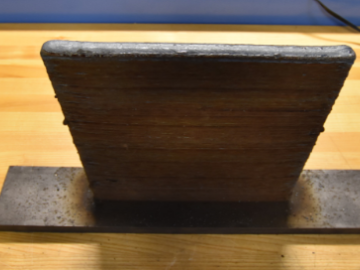
A novel additive manufacturing method developed by researchers at Oak Ridge National Laboratory could be a promising alternative for low-cost, high-quality production of large-scale metal parts with less material waste.
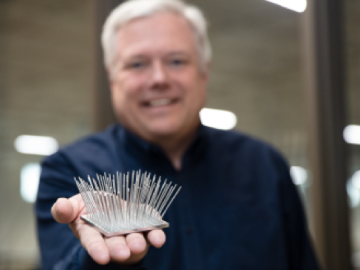
When Scott Smith looks at a machine tool, he thinks not about what the powerful equipment used to shape metal can do – he’s imagining what it could do with the right added parts and strategies. As ORNL’s leader for a newly formed group, Machining and Machine Tool Research, Smith will have the opportunity to do just that.

Scientists at Oak Ridge National Laboratory have developed a low-cost, printed, flexible sensor that can wrap around power cables to precisely monitor electrical loads from household appliances to support grid operations.
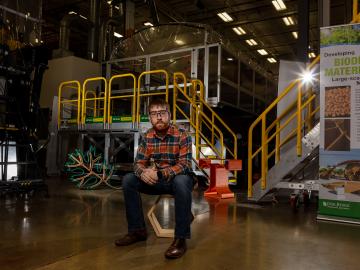
Alex Roschli is no stranger to finding himself in unique situations. After all, the early career researcher in ORNL’s Manufacturing Systems Research group bears a last name that only 29 other people share in the United States, and he’s certain he’s the only Roschli (a moniker that hails from Switzerland) with the first name Alex.
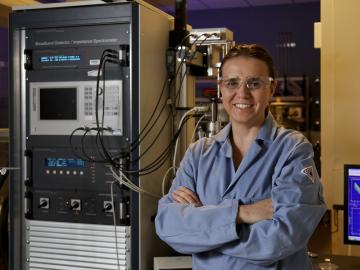
Vera Bocharova at the Department of Energy’s Oak Ridge National Laboratory investigates the structure and dynamics of soft materials.
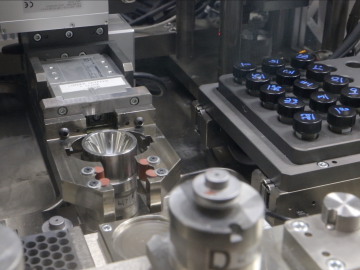
By automating the production of neptunium oxide-aluminum pellets, Oak Ridge National Laboratory scientists have eliminated a key bottleneck when producing plutonium-238 used by NASA to fuel deep space exploration.

Oak Ridge National Laboratory scientists studying fuel cells as a potential alternative to internal combustion engines used sophisticated electron microscopy to investigate the benefits of replacing high-cost platinum with a lower cost, carbon-nitrogen-manganese-based catalyst.



